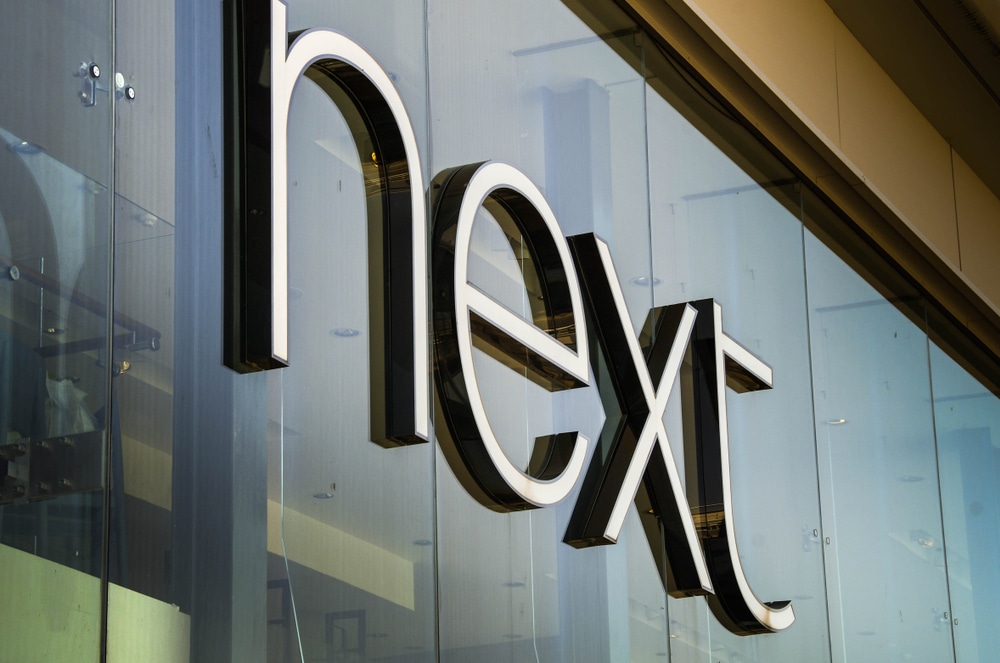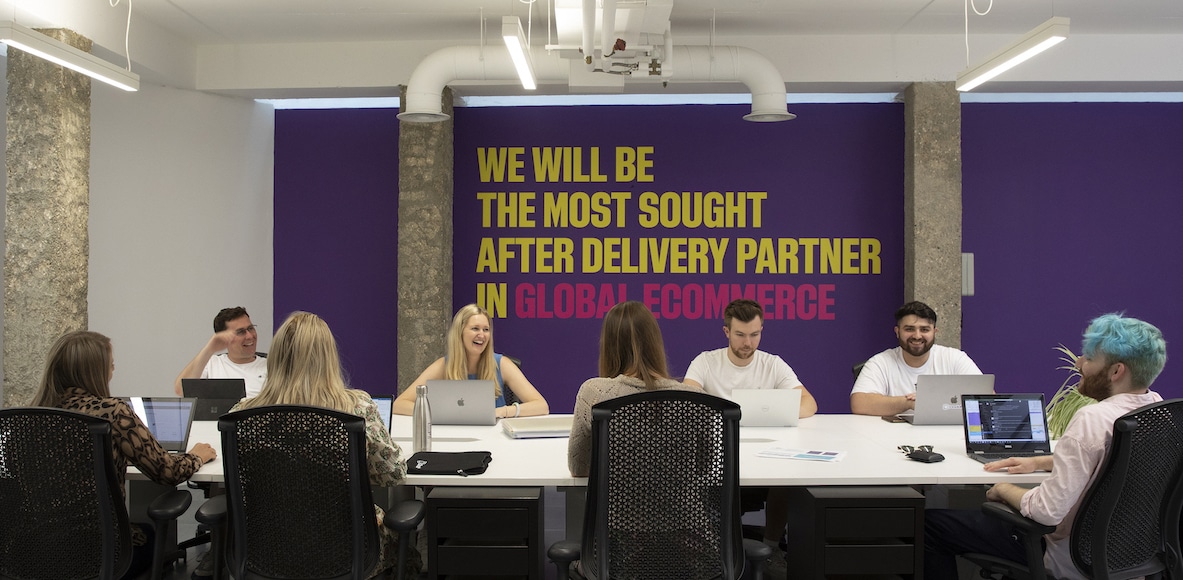Insight / Blog
How one UK omnichannel retailer is leading the way on returns

Summary: Next proposes keeping 195 loss-making stores open to better service ecommerce demand and power a truly omnichannel strategy.
It’s well documented that ecommerce return rates are rising, hitting nearly 40% for certain fashion retailers. Coupled with massive macro-economic headwinds driving diminishing profits from leading UK retailers such as Boohoo, ASOS and Missguided, the latter of which entered administration before being rescued by the Fraser Group, it’s clear that returns are having a detrimental effect on ecommerce merchants.
Zara has begun charging £1.95 per return (unless returned in-store), and we are already seeing more retailers follow suit, including ASOS, who have been historically vocal about keeping returns free.
One potential path through the returns epidemic currently faced by many online retailers is currently being charted by Next, a UK-based fashion and homeware business that has for many years been leading the market in blending online and offline retail. In its year-end results, the retailer outlines a 15-year stress-test scenario whereby it could keep 195 loss-making stores open (at a potential cost of £35 million per year) on the basis that they enable Next to better service ecommerce demand. That could be through store-based fulfilment, or simply by making in-store collection and returns easily accessible to customers.
While not every multichannel retailer will have the appetite to keep open loss-making stores, Next’s plan shows how valuable omnichannel thinking can be for retailers trying to make sense of multiple pressure points, online and offline, in a recessionary economic environment.

Online booms for Next during COVID
During the first year or so of the pandemic, Next’s retail stores were largely forced to close by lockdowns, making the brand reliant on online sales. These sales surpassed expectations in 2021, with Next able to make up for most lost in-store sales within the first quarter. Online sales in Q1 2021 were 60% higher than its pre-pandemic levels in 2019, putting it ahead of online retailers such as Asos and Boohoo as the UK’s largest online clothing retailer.
In the second quarter of 2021, Next scaled up online operations to match this new level of demand, which it described as being “fuelled by the release of consumer savings accumulated during lockdown”. Across the year, Next realised profits of £700m, on par with pre-COVID levels.
Looking at the covid-impact, the online boom has changed a lot for Next. In 2021, online made up the majority of sales, rising 44% from the same period in 2019. In comparison, in-store sales dropped by 22.7%.
So in 2 years, Next have gone from a pre-pandemic position where online and in-store sales were roughly matched to a post-pandemic one, where online sales generate over 2x the revenue. As a result, Next has had to adapt fast and clearly knows it needs to keep that open mindset:
Next“We cannot decide how our customers will shop; our job is to adapt and serve them in whatever way they most want. To this end NEXT has changed dramatically over the last fifteen years. The business has moved from stores to internet, from UK only to international, from mono-brand to multi-brand aggregator.”
Keeping 195 loss-making stores open
Next’s year-end results included two scenarios of the next 15 years for the company. The first proposed closing retail stores once they get close to making a net loss at branch level. When profitability hits <4%, the store will be closed at lease renewal, whereas other branches at >4%-20% will either be held over at passing rent or renewed for shorter lease contracts.
However, simply closing loss-making stores ignores the overall picture of how retail and online channels interact and support each other.
Next“For many customers the store collection service is not only cheaper, it is also more convenient than staying at home to receive a delivery. As a result, around half of our Online orders are delivered to our stores. These orders, though smaller in value than orders delivered to home, represent one third of our Online turnover.”
IfIf loss-making stores are closed, Next loses these benefits. Therefore, in an alternative 15-year scenario, the report proposes keeping 195 loss-making stores open, at a cost of £35 million annually, to fulfil online orders and returns. To Next, this is a “reasonable cost for the Online business for the use of the 330-store network”.
This scenario shows an omnichannel strategy at play here, where in-store sales aren’t assessed on its own performance alone but on how it connects and operates within the wider Next sphere. This is where other retailers can learn from Next, particularly amidst the rising returns crisis.
Omnichannel approaches to rising returns crisis
Next“For the moment, our Retail estate and staff remain central to the service we offer Online.”
True omnichannel strategy needs channels to be understood as a collective rather than in silos. For Next, this involves looking at stores not just based on their own performance but on how they facilitate other avenues of growth. In the case of its retail estate, that means offering locations for click & collect, locations that can support online orders by providing local inventory for faster deliveries, and convenient locations to drop off returns.
This isn’t just one sided. As Next’s online customers use its physical stores for collections, returns or exchanges, they’ll be increasing footfall and in-store sales. Retail stores also play a crucial part in the decision-making stage for some consumers, as 68% of consumers say that being able to touch, feel and try on products is critical for them. Following an in-store visit, the same study found that 30% of all UK consumers have gone on to buy clothing online.
The consumer journey is not happening either in-store or online: it’s a combination of both.
Retail stores and returns
Next consumers can return items to its stores for free, avoiding a £2.50 charge that is payable for consumers using a carrier returns option (effected by way of a discount of the refund amount). This isn’t just cheaper for consumers but also improves the overall experience by having their refund processed immediately.
If the returns process is easy, 92% of consumers will buy again, securing future loyalty. In addition, 62% of shoppers are more likely to shop online if they can return in-store, acting as an extra incentive to boost sales.
It’s a strategy that Zara has followed by charging £1.95 for returns unless returned in-store. Like Next, having free returns in-store allows Zara to drive footfall into their physical stores, increasing the efficiency of handling returns. And, with increased footfall and ease, it increases the chance of consumers buying from Zara’s online presence in future, and of them making impulse purchases in-store.

The future for Next & other retailers
Next has proven the critical role stores have in a comprehensive retail strategy, particularly when it comes to supporting online growth. Although the annual report proposed to keep 195 loss-making stores open, the next few years might see a downsizing of some of the Next retail estate from large stores into smaller collections and return hubs, holding a smaller assortment of products, aiming for the type of item that consumers might grab while collecting or dropping off their orders.
As well as using retail stores to facilitate its own online growth, many Next stores also serve as Amazon Hub locations, allowing consumers to pick up Amazon orders in-store. This also increases footfall from external channels and provides Next with the opportunity to convert visitors collecting a parcel into paying customers.
If other retailers want to follow in Next’s omnichannel success, they must have a solid digital capacity to execute a seamless journey from online to in-store. Whether that’s store staff having the right tech on their devices to scan in returns, or the option to self-serve for returns with automated kiosks to speed up drop-off, having the right tools is essential to making omnichannel work in-store.
If you want to talk more about returns, collections and how to make ecommerce work better in your physical locations, speak to us.

Topics:
Related articles
How 3PLs Can Cut Costs, Reduce Waste and Boost Revenue With Smart Returns Management
3PLs should take advantage of returns to help reduce cost, efficiently manage warehouse resources, and aid growth.
Saving profits and the planet: 4 ways to sustainable & cost-effective returns
Returns drain profits and damage sustainability. Luckily, retailers can implement both cost-effective and sustainable returns using these 4 ways.
Speedy refunds: creating happy customers through fast & effective returns
Find out how speedy refunds can recapture revenue, increase customer loyalty and boost lifetime value.












